The 'water spark plug' could be a good way to study Strange Radiation and charge metals for LENR
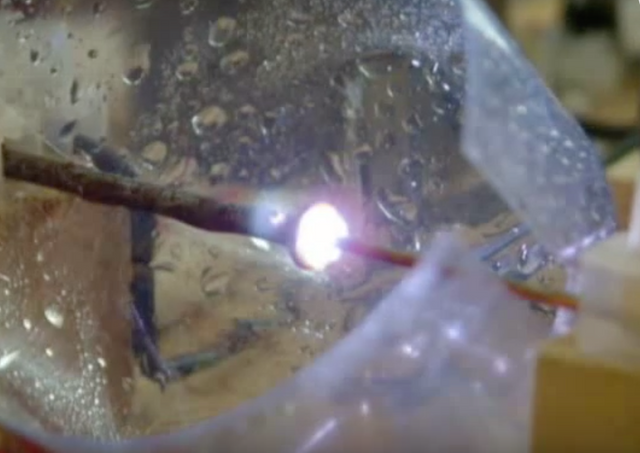
In the video below, you can see a fully described circuit that is apparently producing ball-lightning like discharges and where there is ball-lightning, there is also likely the whole range of Strange Radiation (SR) and Active Agents (AA) that Kenneth Shoulders collectively called Exotic Vacuum Objects (EVOs).
This is achieved, it would appear, by reducing the discharge time of a capacitor to a minimum though the use of a high power diode. Now, whilst the circuit is more complex than Alexander Parkhomov's 'Woodpecker' it may be able to be modified in a range of ways enabling improved operation, though it would still suffer from electrode erosion which the 'Woodpecker' compensates for by dropping the electrode to full contact on each cycle. Alexanders circuit is flexible in forward current and because the electrode is moving it is sweeping the parameter space on each stroke.
One way to possibly improve the 'water spark plug' would be to up-rate the high voltage diode.
Water spark plug as a Strange Radiation generator
This circuit may be a good device to study strange radiation. The challenge is that it seems to be sensitive to the amount of water that is applied across the junction, too little and no effect, too much, not enough of an effect. One suggestion to get around this is to use an ultrasonic water mist maker, then by positioning the spark gap above the mist source, the water vapour supply could be regulated. Also, the ultrasonics may help in production of various scales/morphologies of EVOs.
If stable operation can be achieved, it would be helpful to allow distance between the experimentalist and the reactor in order to use it as a device to study the effects of Strange Radiation without potentially harmful exposure.
Controlled release
Having EVOs is good and necessary to the process, but once they are there, better to grow and reap rather than break. By using a repetitive spark, you will make and break (some of) them, and this probably accounts for the explosive nature, we witnessed similar things in India with Suhas Ralkars foil processor. This is the problem some researchers in this field are likely facing.
Use as a fuel processor?
ECCO fuel had SR stored in it, we know this because it produced SR tracks on photographic emulsion a storage container (shredding it), non-contact plastic and on web camera. Suhas used a pulsed glow discharge + ultrasonics in his unverified ECCO heat generator, allowing the reactor to run and run. If however he used a spark, the cores would explode, stopping the reactor from doing any more useful work. Using the AA to do work in a measured way, whilst letting it run its natural cycle, rather than blowing it up 'en masse' is apparently more productive
Kenneth Shoulders established that EVOs can reside in metals indefinitely and can be later stimulated to perform work. Therefore, this water spark circuit may be good to charge fuel metal powders with EVOs, for later use in a dry, glow discharge and ultrasonically stimulated reactor (sound, electrical or RF pulse).
Explosive power
To understand the power from such a discharge device combined with water, one only need to look at the work of Richard Hull and Peter Graneau
This effect, according to Peter Graneau was discovered at least by 1907.
"The unusual strength of explosions caused by a pulsed current flowing through water plasma was first noticed in 1907 by Trowbridge in his early high voltage laboratory at Harvard University."
This knowledge along with the published works or Peter Graneau and others effectively makes electric discharge effects in water / water vapour between conductors, OPEN SOURCE. Working embodiments showing significant novelty are of course patentable.
Tip Off: Peter Middleton
Does this look and sound familiar to you?
Tip off: Jouni Tuomela
And this is just cool
Commercial system
2 cylinder kit is around $300, could this or one of the simple circuits above be used directly in a reactor or as a means to process fuel?
Here is the patent
And here is a demonstration of it being applied
So interesting, those HV-diodes they use in plasma-ignition systems in older cars, like in here:
The reason for those huge voltages seems to me explained here;
http://www.energeticforum.com/renewable-energy/3235-gray-tube-replication.html?highlight=water+sparkplug
in message #3
The flowing current when stopped by the rectifier creates this huge reverse voltage.
"The HV potential, which is the voltage gas (it is a gas composed of "particles" smaller than a hydrogen atom - smaller than an electron - very, very small fractional charges - Mendeleev's original periodic table of elements showed some of this) has MOMENTUM.
As it is moving, the HV diode slams shut and the voltage potential with its momentum slams against the diode...compressing it more and more...now that re-compressed potential...which is expanded 90 degrees from the wire has to go somewhere...the only path to ground as of now is the gap on the plug. That un-condensed/expanded potential is what causes the primary effect of the cold plasma.
Then, when voltage on the cathode/output of the HV diode drops below the annode/input of the HV diode, then and only then can LV source move out of it and over the gap.
The lv source is not the cause of the effect, it simply can boost the primary effect - which can be had all by itself with one small cap that is virtually empty when discharged to the primary.
Primary effect is that potential slamming against a diode.
Many think the simple hv spark jumping a gap is enough to ionize the gap to reduce the resistance enough to have the lv source follow it...that is simply a fairytale.
Only the recompressed potential against the diode's abrupt shut off can cause the cold plasma ionization that is necessary to allow the lv source to follow. At this circuit's scale of operation, this is all necessary to make these effects."
Here nice video showing the effect of the HV-diode.
In the video there seems to happen remote bursts also.
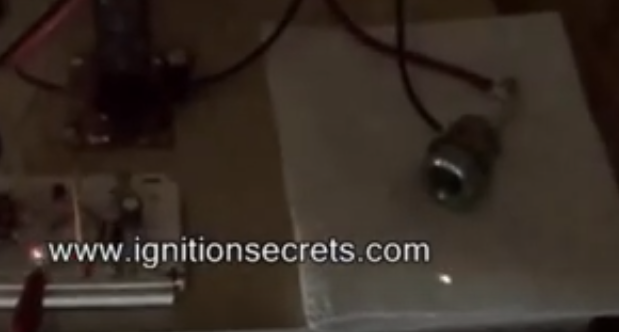
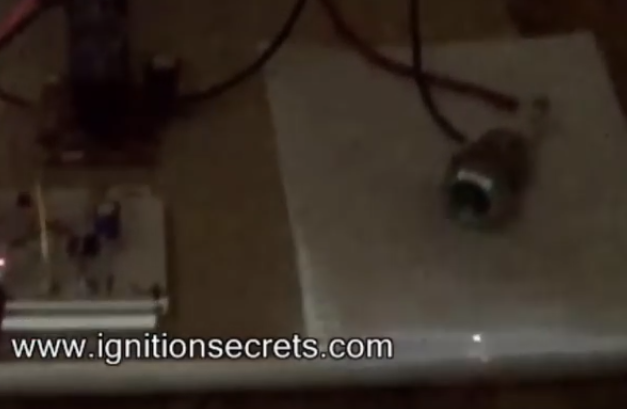
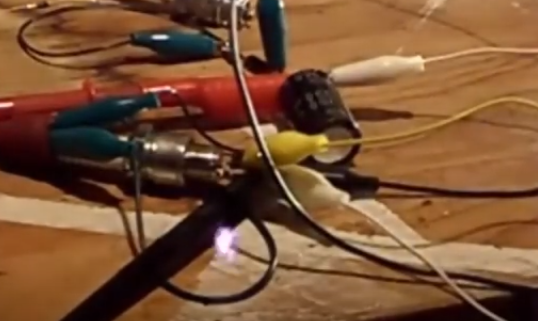
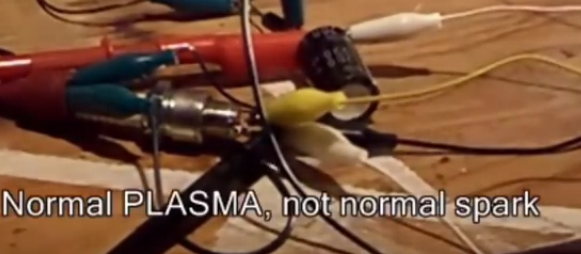
At 4:27 is one.
And 4:43
Yes